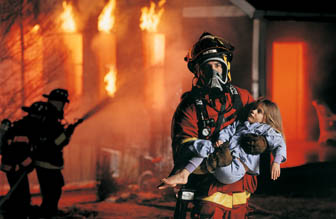|
|
||||||||
|
Model Posing guide - Learn to become a model - Model posing guide
|
||||||||
|
|
If you want to be a model or become a model, you will need to learn to pose like a professional model. If you want to become a model photogrpaher, you need to be a ble to pose models. This article is about model posing techniques for photographers or people that wish to become a model. Learn to become a model by learning to poseLearning how to become a model and / or learning to pose both professional and armature models, is something everyone in the modeling and photography industry needs to know. As a professional model, posing and learning to work with photographers is something that will further your professional modeling career. Posing 101 for models and photographers will cover such topics as posing in difficult situations, posing great models, what is a model’s headshot, what is a model’s comp card, what type of pictures should be in a professional model’s portfolio, proper pocket posing technique, and many more topics related to learning to be a model or learning to pose a model. Posing 101 for models and photographers or... How to be a model and learn to pose.If you want to be a successful model, you have to learn how to pose. You might get your first gig on your looks, but without the ability to pose well, you’ll soon find yourself short on “second time” clients. |
||
|
If you’re a photographer and you want to be a people shooter, you’re going to need to be able to pose people. Learning to pose, yourself, or someone else, is all about observation. In commercial photography, the goal is to make the model look “normal” or “natural” doing whatever you have them doing. I catch myself at the supermarket, watching people do everyday normal activities like pushing a shopping cart or standing in a checkout line. |
|||
Learn to be a model from observing real lifeAnd you should do the same thing too. Where are their hands? Is there weight uneven or the same on both feet? Is their head canted? Which way are there feet pointing? Do they look “natural”? If so, why? If not, why? You can learn a lot at the supermarket.
|
|
||
Articles
How to become a model by learning to pose (for photographers and models)
|
Model Posing Dos
Slouch / uneven weight Asymmetry Bent limbs and joints Canted heads Shapely silhouette Look out of the side of your face Posing Don’ts Foreshortening Hyper extended joints Specific problems and solutions What to do with hands Fake walking Proper pocket technique Issues for Photographers Difficult situations Working with awkward people Have backups Posing great models |
My name is Michael Ray and I’m a commercial photographer. I have been working with models and the modeling industry for more years than I care to admit here. Over these to many years, I have learned a thing or two or three about working with models and various aspects of modeling and how to become a model. I worked with good models and bad models. I’ve worked with amateurs that should have been professionals and I’ve worked with professional models that shouldn’t have been. And throughout all this experience, I’ve picked up some information that I thought I would pass onto whomever was interested in eother posing models or actually becoming a model. I think the information you find here will be useful to both photographers and people who whis to be a model, but please keep in mind that these opinions come from a photographer’s perspective. And keep in mind, this information pertains mostly to posing models for every-day commercial photography situations and not for “Fashion Photography” magazine spreads. (even though much of the info would still apply) When you talk about posing models, you can break down the suggestions into to categories, dos and don’ts. I won’t be able to make any suggestions concerning expressions, because that will be dictated by the purpose of the photo in the first place. If the model is supposed to be a compassionate doctor, then the model should try to look compassionate, not sexy. The brings me to my first tangent… If you want to be a good model, work on all kinds of expressions. Yes, that means standing in front of the mirror, practicing. You’ll feel stupid, but you’ll be a better model. Back on subject… Just remember that you’re there at the photo shoot for a purpose. The purpose is to communicate something to the viewer of the photo. The purpose dictates what you’re doing and how you’re doing it. You can’t hold a tool the wrong way, just because it looks better. You have to wear the safety glasses even if it musses your hair a bit. Adapt and conquer! Other issues for Models How to get started What does it take to become a model? Modeling portfolios How does a model find work? Should I join an agency? What is a comp card? What is a headshot? Can my child model? Models reading guide Read the photographer What to bring to a shoot Things to be or not to be... |


